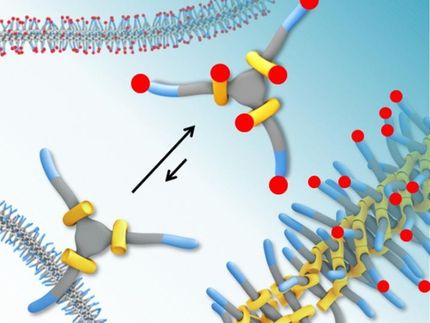Deep recycling in the Earth faster than thought
Sunken oceanic crust resurfaces from Earth's mantle after only 500 million years
The recycling of the Earth's crust in volcanoes happens much faster than scientists have previously assumed. Rock of the oceanic crust, which sinks deep into the earth due to the movement of tectonic plates, reemerges through volcanic eruptions after around 500 million years. Researchers from the Max Planck Institute for Chemistry in Mainz obtained this result using volcanic rock samples. Previously, geologists thought this process would take about two billion years.
Virtually all of the ocean islands are volcanoes. Several of them, such as Hawaii, originate from the lowest part of the mantle. This geological process is similar to the movement of coloured liquids in a lava lamp: hot rock rises in cylindrical columns, the so-called mantle plumes, from a depth of nearly 3,000 kilometers. Near the surface, it melts, because the pressure is reduced, and forms volcanoes. The plume originates from former ocean crust which early in the Earth's history sank to the bottom of the mantle. Previously, scientists had assumed that this recycling took about two billion years.
The chemical analysis of tiny glassy inclusions in olivine crystals from basaltic lava on Mauna Loa volcano in Hawaii has now surprised geologists: the entire recycling process requires at most half a billion years, four times faster than previously thought.
The microscopically small inclusions in the volcanic rock contain trace elements originally dissolved in seawater, and this allows the recycling process to be dated. Before the old ocean crust sinks into the mantle, it soaks up seawater, which leaves tell-tale trace elements in the rock. The age is revealed by the isotopic ratio of strontium which changes with time. Strontium is a chemical element, which occurs in trace amounts in sea water. The isotopes of chemical elements have the same number of protons but different numbers of neutrons. Mainz scientists developed a special laser mass spectrometry method which allowed the detection of isotopes of strontium in extremely small quantities.
To their surprise, the Max Planck researchers found residues of sea water with an unexpected strontium isotope ratio in the samples, which suggested an age of less than 500 million years for the inclusions. Therefore the rock material forming the Hawaiian basalts must be younger.
"Apparently strontium from sea water has reached deep in the Earth's mantle, and reemerged after only half a billion years, in Hawaiian volcano lavas," says Klaus Peter Jochum, co-author of the publication. "This discovery was a huge surprise for us."
Another surprise for the scientists was the tremendous variation of strontium isotope ratios found in the melt inclusions in olivine from the single lava sample. “This variation is much larger than the known range for all Hawaiian lavas”, says Alexander Sobolev. “This finding suggests that the mantle is far more chemically heterogeneous on a small spatial scale than we thought before.” This heterogeneity is preserved only by melt inclusions but is completely obliterated in the lavas because of their complete mixing.
Sobolev, Jochum and their colleagues expect to obtain similar results for other volcanoes and therefore be able to determine the recycling age the ocean crust more precisely.
Original publication
Alexander V. Sobolev, Albrecht W. Hofmann, Klaus Peter Jochum, Dmitry V. Kuzmin & Brigitte Stoll; A young source for the Hawaiian plume; Nature, 10. August 2011
See the theme worlds for related content
Topic World Mass Spectrometry
Mass spectrometry enables us to detect and identify molecules and reveal their structure. Whether in chemistry, biochemistry or forensics - mass spectrometry opens up unexpected insights into the composition of our world. Immerse yourself in the fascinating world of mass spectrometry!

Topic World Mass Spectrometry
Mass spectrometry enables us to detect and identify molecules and reveal their structure. Whether in chemistry, biochemistry or forensics - mass spectrometry opens up unexpected insights into the composition of our world. Immerse yourself in the fascinating world of mass spectrometry!


























































